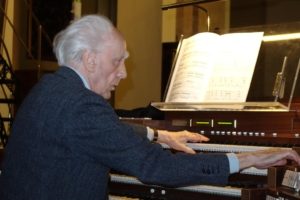
Photo by Jacques le Goff
Having an interest in Jean Guillou supposes to open up to an original thought that irrigates several fields of art with the same energy.
If his name is inextricably linked to the organ, having acquired, since long time ago, an unanimous international recognition devoted to a master, it is because his art as an interpreter opened the organ to new expressive spaces, largely pushing the limits of instrumental technique and exploiting in a very personal way the instrument’s timbres, either invented or combined in a constantly renewed way, as an authentic colorist, so that he always solicits the listener’s attention and illuminates the structure of the works.
Taking advantage from his stay singularly on the sidelines of the organ world, as a virtuoso performer, improviser and composer, Jean Guillou has undoubtedly cast a new look on the organ by releasing its religious character and associating it to a form of avant-garde.
However, the importance of his contribution in the field of organ playing should not hide the rest of his vast music catalog as well as his numerous writings and his organ’s designs.
We will recall, firstly that Jean Guillou has set his incredible instrumental virtuosity to serve an innovative vision of the great organ repertoire. Rejecting the habits and traditions, he has continued to pass through the filter of his personality the works he approached, without consideration linked to the time of their writing.
Thus, Bach, Liszt, Mozart and Handel, Schumann, Franck or Dupré are illuminated by a new light constantly renewed by a transcendent playing and a very personal art of registration that reveals their unheard sound faces.
Fertile improviser, he gave this art a dramatic impact which urges the listener in a very special way. Each of the frescoes that he developed in the moment was a snapshot of his proper internal musical flow that he confessed he was the carrier, gushing, an energy eruption with narrative powers.
We have also to specify that Jean Guillou is recognized as one of the major composers of our time. He is the author of an extensive corpus of works written for solo instruments, voice, chamber ensembles and large orchestra.
His organ works are naturally to the forefront, both for their scale and the renewal of language that he has brought.
Drawing from literature a still original inspiration, Jean Guillou has allowed the organ to explore new expressive resources. His unique sound universe, marked by a consuming rhythmic power and an assumed lyricism, echoes of epic or elegiac songs and propels the listener into quivering musical regions.
From this point of view, the two Ossianic ballads « Temora » op. 9 and « Les Chants de Selma », op. 23 after James MacPherson, the Chapelle des abîmes op. 26 after Gracq, the Scènes d’enfant op. 28 after E.A. Poe, Hyperion or La rhétorique du feu op. 45 inspired by Gaston Bachelard, Regard op. 77, Macbeth, the Lay of the shadow op. 84 and Périple op. 87 regenerate, in their way, the form of the symphonic poem.
Spraying the limits of a yet already huge instrument, Jean Guillou gives it a spatialized dimension in his Symphony initiatique op.18 for three organs (than in his last version, for two organists), in the Revolte des Orgues op. 69 for 9 organs and percussions, and in eight of his ten Colloques that make it dialogue, in the manner of Plato or of Erasmus, with the piano, drums, panpipes or brass.
In addition, if his chamber music highlights solo instruments or new combinations (tree Sonatas for piano, a Quartet for oboe and string trio op. 22, Co-incidence for violin op. 63, Impulso for flute op. 74, Poem op. 78 for piano duet and percussions,…), it is worth noting his eight concertos for organ and orchestra, his three symphonies (including the monumental Symphony Nr 1 “Judith” op. 21 for mezzo and grand orchestra), two Piano Concertos and the Concerto op. 48 for trombone, fifteen brass and percussion.
Furthermore, Jean Guillou made a spectacular development of the repertoire by adapting for the organ’s resources some major works of Bach (the Musical Offering, the Goldberg Variations), Liszt (Orpheus, Prometheus, Tasso, Valse oubliée nr 1), Mussorgsky (Pictures at an exhibition), Stravinsky (Petrushka three dances), Tchaikovsky (the Sugar Plum Fairy in the Nutcracker, the Scherzo from Symphony “Pathetic”), Prokofiev (Walk the love of three oranges, Toccata for piano).
Like real organ works, these transcriptions provided also a very strong technical and expressive impact renewal to the organ playing.
Finally, without being limited to the stage or the loft, Jean Guillou has also composed for film and theater and has continued to place the organ on unexpected scenes, combining the painting and cinema (in February 2016, he improvised on the Murnau’s Nosferatu at the Berlin Philharmonic).
Most of his works and transcriptions are published by Schott Music in Germany; his many recordings are published by Universal-Philips-Decca, Dorian, Festivo and Augure.
Photo by Giampiero del Nero
Artist fed of literature, Jean Guillou has often uttered his love of the great authors who accompanied him : Plato, Erasmus, Balzac or Mallarmé are ones he was used to cite naturally, not to say of Gracq or Saint John Perse to better circumscribe the influence they had on the poet he was himself – as evidenced by his poetry collection The Visitor (Christophe Chomant Publisher, 2014), both sulfur and lyrical.
Two major books let us discover the theorist : The Organ, memory and future (Fourth Edition, Symétrie, 2010) and The Music and gesture (Beauchesne, 2012) and prove to be essential documents for understanding his thinking.
Finally, Esprit de suite (Beauchesne, 2019) offers an intimate and educational reading of the repertoire as well as a presentation of his own works.
In the field of organ building, the originality of his thinking and the relevance of his ideas are measured by the innovative instruments he designed for the churches of l’Alpe d’Huez (built by Detlev Kleuker), Notre-Dame-des-Grâces of Brussels (Kleuker), Sant’Antonio dei Portoghesi of Rome (Mascioni), the León’s cathedral (Klais), but also for the Naples Conservatory (Tamburini, Zanin), the Zurich’s Tonhalle (Kleuker, Steinmeyer), recently transferred in the Koper cathedral (Slovenia), and for the Tenerife auditorium (Blancafort).
This last instrument, as well as those of León and Rome prefigure the “Variable Structure Organ” imagined by Jean Guillou. Spread in fifteen mobile cases – some of them having their own keyboard – controlled by a general console and rich of all sound resources like a large instrument, truly mobile and polymorphic, it will open a new age of the organ.
His teaching for decades around the world, including for thirty-five years to the International Meisterkurse o Zurich was encouraging new generations of organists.
In July 2015, he was appointed Honorary Professor of the Saar Hochschule für Musik.
The 10th of March 2018, he received in London the RCO medal, the highest distinction of the Royal College of Organists.
After a tenure of more than fifty years, which drew world renown to the tribune of Saint-Eustache in Paris, he was appointed organist Emeritus in September 2014.
He passed away in Paris on January 26th, 2019, at the age of 88, a few weeks after his last concert in Munich on October the 21st, during which he played for the last time his famous Toccata.
Frederic BRUN,
february 2022


